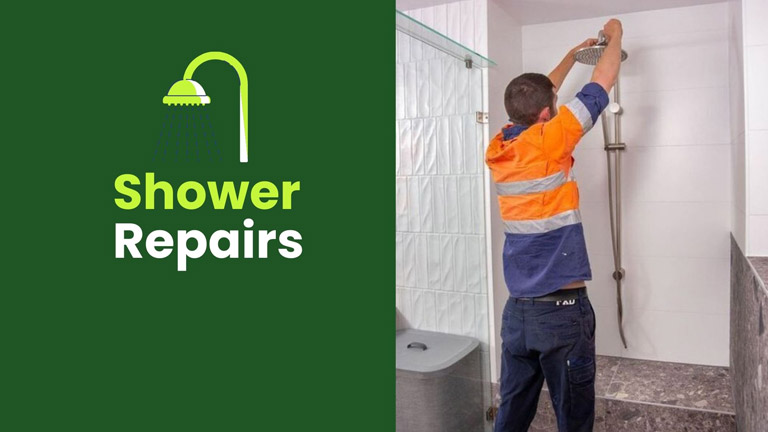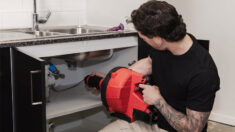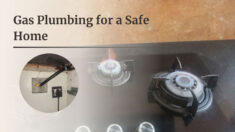
A bathroom should be the one area of your house where you can unwind, refuel, and rinse away the day’s dirt. But nothing will destroy that atmosphere quicker than a leaky shower. Drips behind tiles, water accumulation on the side of the drain, or soggy plaster on the opposite side of the wall. These issues don’t only appear unsightly; they can quietly rot out your house.
The good news? With most shower damage, it is avoidable if you know where it begins and how to make correct repairs to prevent the issue from building up. Let’s lift the curtain on what actually occurs behind those tiles.
Why Showers Fail in the First Place
Showers might look simple – tiles, grout, and a drain. But behind the scenes, there’s a small army of materials working together to keep water where it belongs. When one weak link gives out, trouble starts.
Here are the usual suspects:
- Cracked or missing grout: Tiny gaps in grout let water sneak through. It may not look like much, but over months, it’s enough to rot timber frames or swell plasterboard.
- Damaged waterproofing membrane: Modern showers rely on a hidden waterproof layer beneath the tiles. If it is poorly installed or simply deteriorates with age, leaks become inevitable.
- Worn-out sealant: That bead of silicone around your shower screen is more than cosmetic. Once it lifts or shrinks, water has a direct path to the floor.
- Structural movement: Especially older ones, shift slightly with seasons or renovations. Even a few millimetres of movement can crack grout lines or stretch sealants.
Think of your shower like a raincoat. If there’s a tear, water finds its way in. Ignore it long enough, and you are left shivering in a soggy mess.
The Chain Reaction of Ignoring Leaks
A dripping shower might not feel urgent. After all, what’s a bit of water on the floor? But water damage is sneaky. It creeps sideways, downwards, and even upwards through capillary action.
Small leaks can:
- Rotting timber frames, leading to structural headaches.
- Attract termites (they love damp wood).
- Cause tiles to loosen, crack, or even fall off.
- Leave you with mould – not just the kind you scrub off with bleach, but the kind that grows inside walls and affects air quality.
By the time you see bubbling paint in the hallway or a musty smell that won’t go away, the repair job is no longer small. It’s a “rip out the wall and start again” kind of expense.
Why Location Matters
Here’s where local context comes into play. Shower repairs aren’t created equal, because the environment determines the issue.
Beachside houses get salty sea air, which rusts metal fittings and hastens grout deterioration. Showers there tend to require earlier repair because salt crystals degrade surfaces over time.
A lot of homes are heritage-listed with thick brick walls but creaky old flooring. A floor that’s a bit sloping can also collect water in the corner of the shower, putting pressure on the waterproofing membrane in ways a perfectly flat floor wouldn’t.
Meanwhile, houses tend to have contemporary waterproofing systems, but the clay soils in the region swell and contract, causing houses to move. That movement tends to manifest in the form of hairline fractures in grout or tiles.
So, while the underlying issue is water where it should not be, the cause differs by location.
The DIY Temptation (and Why It Often Backfires)
Most homeowners reach for a tube of caulk and think a quick seal will do the trick. It might work for a month. But if the waterproofing membrane below has failed, applying sealant to the surface is like placing a Band-Aid on a ruptured pipe.
Moral of the story: if the leak has existed for longer than a few weeks, or if you find damage outside the shower itself, it’s no longer a DIY project.
How Proper Repairs Save You Long-Term Pain
Getting repairs done properly isn’t about making the shower look pretty again. It is about stopping hidden water travel. A sound repair usually involves:
- Inspection – Identifying whether the issue is surface-level (grout and sealant) or deeper (membrane failure).
- Stripping back – Removing damaged grout, tiles, or sealant so the repair bonds properly.
- Re-waterproofing – Applying new membranes or barriers if the original has failed.
- Re-tiling and sealing – Restoring the surface with strong grout and flexible silicone.
Done right, a repaired shower can last many years. Done wrong, you’re back at square one within months.
Preventive Habits Every Homeowner Should Know
You can’t stop materials from ageing, but you can slow the decline. Here are small habits that save big headaches:
- Wipe down shower walls after use to reduce moisture buildup.
- Reseal silicone joints every 5–7 years before they fail.
- Keep an eye on grout lines and repair small cracks early.
- Ventilate the bathroom – fans and open windows help.
- Avoid harsh cleaners that strip sealants and grout.
These little actions add years to your bathroom’s life. Think of it as servicing your car: a bit of attention along the way prevents expensive breakdowns.
The Bigger Picture
Bathrooms are more than just tiles and taps. They are high-moisture zones where one small issue can spiral into a whole-house problem. By understanding the common causes of shower damage, you are better equipped to spot early warning signs and make smart repair choices.
Regarding the hype surrounding premier bathrooms or professionals providing shower repairs, the idea is not to promote a name. It is to illustrate that being attentive to the issue early on, with the correct knowledge or assistance, makes all the difference between a cosmetic patch job and an overhaul.


